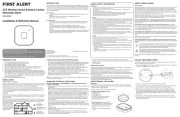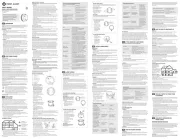First Alert SA521CN Manual
First Alert
Ikke kategoriseret
SA521CN
| Mærke: | First Alert |
| Kategori: | Ikke kategoriseret |
| Model: | SA521CN |
Har du brug for hjælp?
Hvis du har brug for hjælp til First Alert SA521CN stil et spørgsmål nedenfor, og andre brugere vil svare dig
Ikke kategoriseret First Alert Manualer

30 Oktober 2025

29 Oktober 2025

2 September 2025

9 September 2024

1 September 2024

26 August 2024

25 August 2024

25 August 2024

25 August 2024

25 August 2024
Ikke kategoriseret Manualer
- Simplified MFG
- Arlec
- Koliber
- Earthquake Sound
- Soltection
- Global
- Ursus Trotter
- Miller Lite
- Konstant Lab
- Safescan
- IMG Stage Line
- Tesy
- Connection
- Burigotto
- Tiptop Audio
Nyeste Ikke kategoriseret Manualer

16 December 2025

16 December 2025

16 December 2025

16 December 2025

16 December 2025

16 December 2025

16 December 2025

16 December 2025

16 December 2025

16 December 2025
